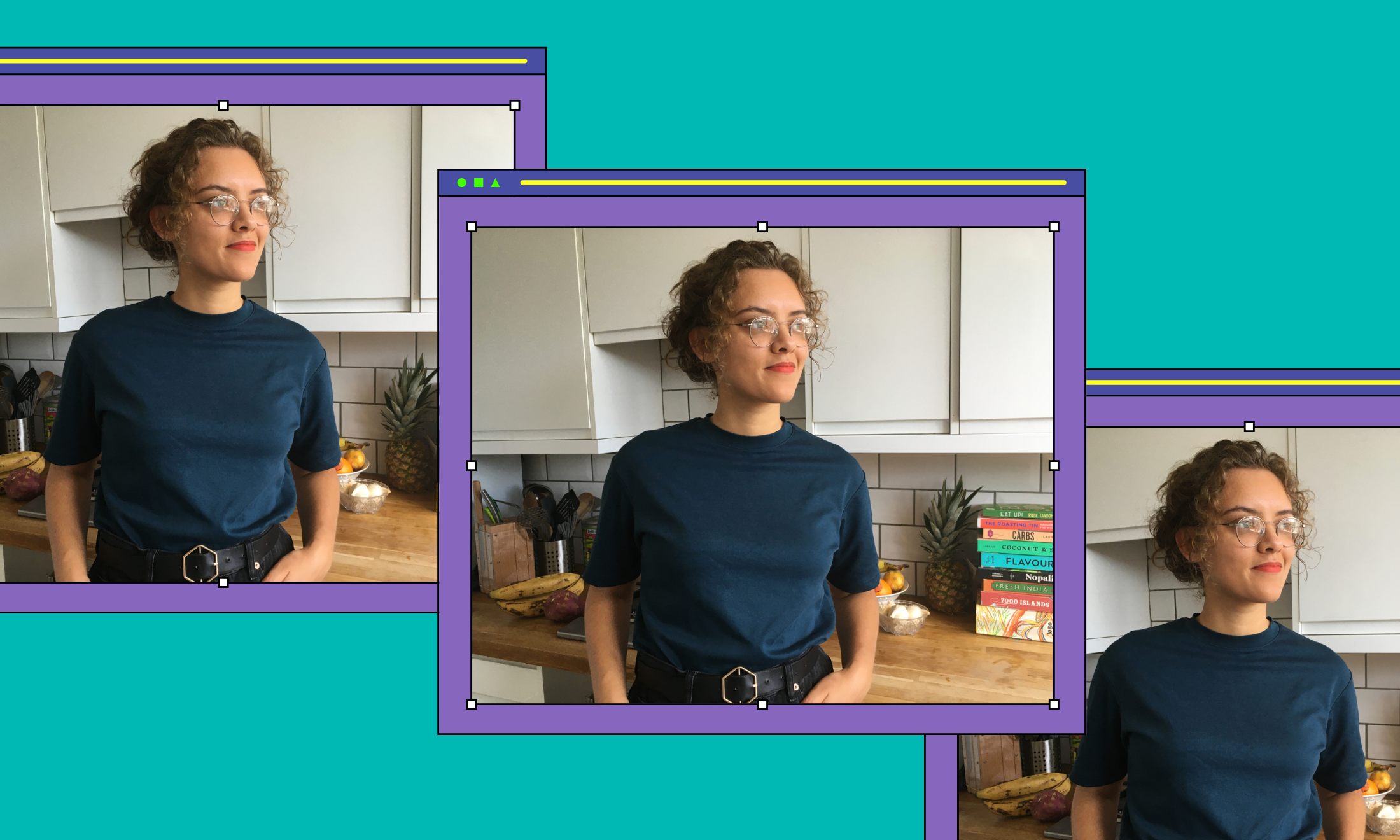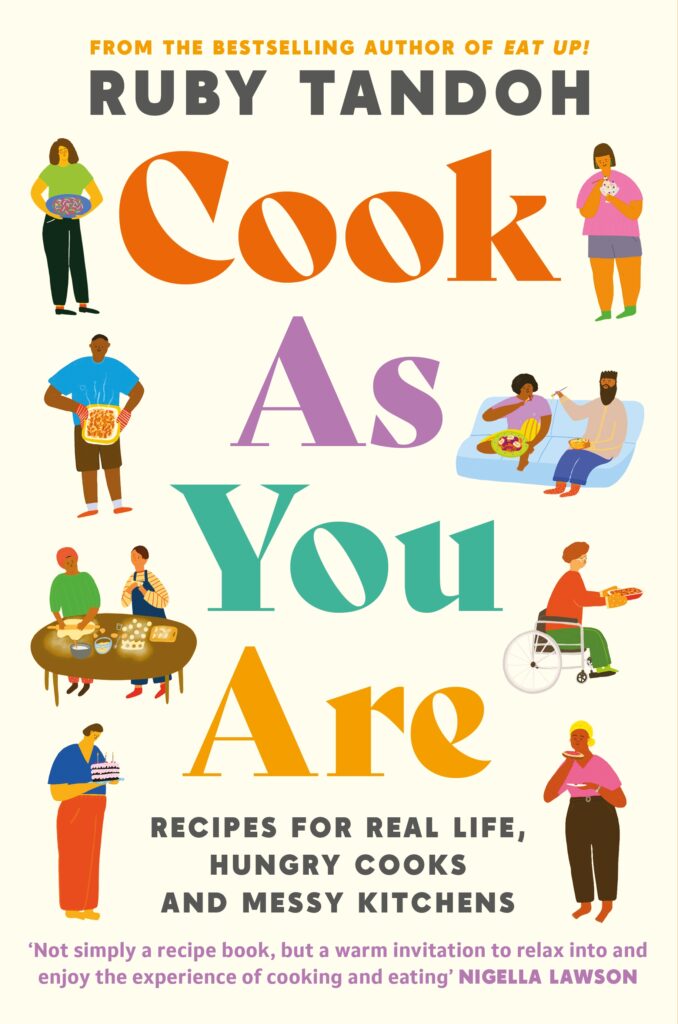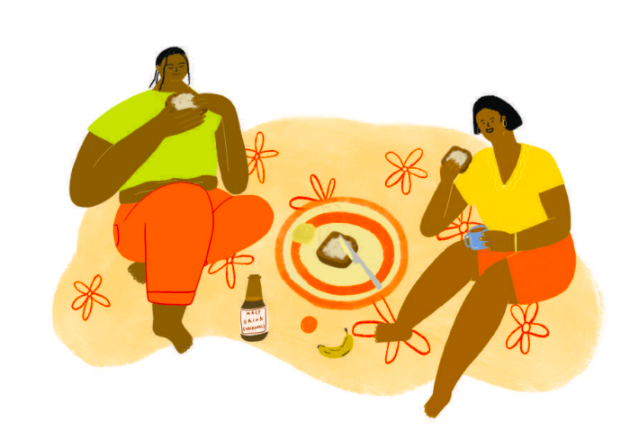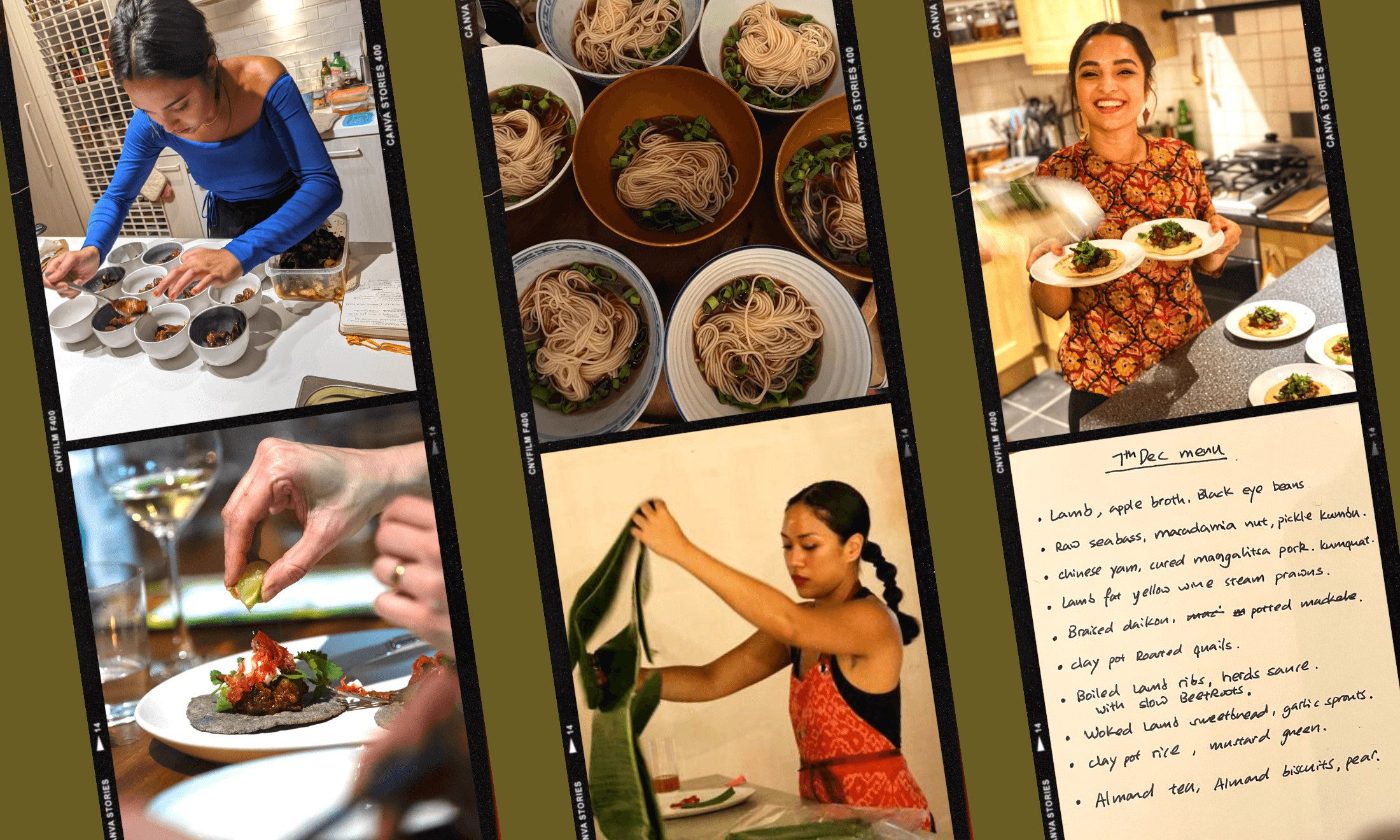
Ruby Tandoh; Canva
Ruby Tandoh wants to celebrate the ways we cook, just as we are
Ruby Tandoh talks accessible cooking, intense recipe testing and shares her exclusive recipe for (super) malt loaf.
Niellah Arboine
02 Oct 2021
Since finishing as a finalist The Great British Bake Off in 2013, Ruby Tandoh has continued to carve out a necessary and relatable space within the world of British food journalism.
Now the food writer and cook brings us her fourth book on food, Cook As You Are, which offers up recipes in digestible chunks for any type of cook no matter your experience or lifestyle.
This isn’t the kind of cookbook that requires you to have a marbled island and a matching set of burnt orange Le Creuset to get stuck in and create something delicious. Instead, Ruby focuses on hungry people, cooks who enjoy long Sundays in the kitchen, or families on a budget in need of something in a rush – all while taking into consideration accessibility and mobility.
While Ruby rather humbly says she’s not reinventing the wheel or coming up with unheard-of dishes, in many ways she is completely shifting what a cookbook can be.
We caught up over video to chat about the realities of home cooking, getting rid of food photography for better dinners and how cookbooks are really used.
gal-dem: Congratulations on the book! It’s awesome. I didn’t realise how big it would be.
Ruby Tandoh: I was shocked as well. Obviously, I’ve just been looking at it on a computer and I didn’t realise how thick it would be, but I’m pleased!
So, what was the inspiration behind Cook As You Are?
I knew I wanted to do another book, I love testing recipes, I love writing, I love getting people in the kitchen. But for a few years, I felt really hesitant, and I didn’t know if it was a good idea, because I didn’t want to release just another cookbook. There already exists every recipe under the sun and they’re all online or just in the heads of people. But then I realised that there was a way that I could do this and actually be a bit more worthwhile. So that’s where I got this idea to do this cookbook that celebrated the ways that we cook, no matter who you are or what your kitchen is like
Sometimes when you’re reading recipes, you end up buying all these items that you’ll never use again, but Cook As You Are gives your ingredient options.
That was a killer, you know. I literally just descended through the circles of hell to test all of that stuff, but I’m pleased I did it.
What was the testing like, especially during the pandemic when food was our everything?
I mean, the testing was just intense. It’s funny because when you write a cookbook you want people to be relaxed when they’re cooking the recipes – you want them to enjoy it. But behind the scenes when you’re testing recipes and when you’re measuring 110 or 115 grams of flour, it’s actually so stressful.
It’s really interesting that the book is broken into different sections like ‘Feed me now’ or ‘For the love of it’. What was your thought process behind that?
I know that when I turn to a cookbook, sometimes I just want dinner, and sometimes I want to linger on something and I want to enjoy the process of cooking. I wanted to reflect that in the way the book is structured. I think most of the time, to be honest, I don’t turn to a cookbook like, “oh I want something for a starter”.
What section would you say you fall under as a cook the most?
Honestly, I think so first one: ‘Feed me now’. It’s various dinners, no sides, no starters, no faffing around. Most of my cooking is an evening meal or a main meal. There are a few cookbooks I go back to again and again and again like a couple of Nigel Slater ones and some Meera Sodha ones.
I feel like that’s really realistic of everyone’s cooking, do we actually cook starters?
This is it, this is my problem. I understand that food fashions come and go, so I’m not going to shit on it, but, there are cookbooks sometimes that I open and half of the book is just starter ideas!
I liked how you talk about how food is treated in a moral way, and the shame around it. Why was it important to include how we emotionally connect to food?
My previous book, Eat Up, deals with the theory of that and I guess what I wanted to do with this book was to put that theory into practice a bit. I wanted recipes that don’t use that moralising language, don’t say things like ‘this is a guilty pleasure’. At this point, it seems quite trite almost. But it does feel important, especially considering how many cookbooks manage to either accidentally or deliberately slip that kind of stuff in.
At the beginning you write, “my portion size might not be the same as yours”. It makes you feel at ease.
That was something I agonised over so much because I guess you could make an argument that there shouldn’t be portion sizes at all, because you should just leave it to people to follow their appetite. I gave the serving sizes as guides, but I did want to make it really clear that this is just a guide.

What was one of your favourite recipes you enjoyed the most to test out and eat?
There’s one recipe that’s so simple. You have tomatoes and you roast them in the oven with nigella seeds and garlic. And then you chuck in butter beans just from a tin, and a tin of coconut milk, and maybe water? You bring it back in the oven and you roast it.
There are no photographs in the book either. What was your thought process behind that?
When a cookbook has photos, unless it has photos for every recipe, you end up just drawn to the few recipes that have photos. It’s magnetic. You can’t help yourself and then you overlook the other recipes, and on top of that, you get fixated on what it should look like. A cookbook with loads of photos is both massive and incredibly expensive to make and then to sell. I don’t want to be charging people 25, 30 quid for a cookbook when it could be a smaller format and more affordable as well.
What do you want audiences to take away from Cook As You Are?
I did a little poll on Twitter that I found so illuminating. I asked people, “From your favourite cookbook in the world, how many recipes do you actually make?” And, honestly, the overwhelming answer was like under five. We’ll try a few recipes, maybe even a lot of recipes, but the ones we come back to are such a small handful. I would like this to be the kind of cookbook where you find those four or five recipes and you’re like, “thank fuck I found these recipes”.
Here, Ruby shares her exclusive recipe for (super)malt loaf from Cook As You Are.
I love malt. I think my obsession started with Maltesers. I then progressed to Soreen malt loaf (so squidgy it borders on the erotic), malted milk biscuits, and Horlicks, Milo and Ovaltine. Malted bread, with its slightly deeper colour crumb and slight sweetness, is my favourite. Again and again, I come back to this flavour, and I’m always looking for new ways to bring it into the recipes I make.
Even if you’re not entirely sure what malt is, odds are you know the taste. It has a depth a little like roasted coffee beans or chocolate, but without that same bitterness. I’ve been making malt loaf for years now, but was always irked by having to trek to a health food shop to get hold of malt extract, which is seldom sold in the supermarkets.
Then one day last summer, while I was necking a bottle of Supermalt, it occurred to me that in malt drinks like this, that deep, full-bodied maltiness was already there for the taking – and way more accessible than the concentrated extract. You can get Supermalt, Mighty Malt, Malta, Vitamalt and similar drinks in loads of corner shops and pretty much any big supermarket. The result is a dark, sweet loaf – less densely chewy than Soreen, but perfect sliced, microwaved or toasted, then slathered with salted butter. (My tester-in-chief, Kaila, said this reminds her of Jamaican Easter bun, so she recommends you could alternatively have it with slices of cheese.)
Makes: 1 loaf cake, serving 6–8
Ready in: less than 1 hour 30 minutes, most of which is baking time (you’ll want to set aside extra time to let this cool before eating it though)
Vegan
240ml Supermalt, Mighty Malt or other full-sugar malt drink (not a low-sugar version!)
1½ tablespoons black treacle, optional
120g raisins or sultanas
180g plain flour
2 teaspoons baking powder
100g soft dark brown sugar
¼ teaspoon table salt
Serve with: salted butter or (as Kaila recommends) Cheddar cheese
Special equipment: 900g loaf tin, roughly 11 × 22cm across its top
1. In a large microwavable bowl or jug, heat the malt drink, black treacle (if using) and raisins or sultanas in the microwave until the liquid is scalding hot. You can also do this in a small pan on the hob. Set the hot mixture aside for 15 minutes to let the fruit plump up and the malt drink
cool slightly.
2. Preheat the oven to 180°C/fan 160°C/gas mark 4 and line your loaf tin with baking paper.
3. While the oven heats, combine the flour with the baking powder, sugar and salt in a mixing bowl. Add the slightly cooled malt and fruit to the flour mixture, but save two teaspoons of the malty liquid for later. Stir just until you have a smooth batter – it should be a milky coffee colour and have a beautiful malty smell.
4. Spoon the batter into the lined loaf tin and bake in the preheated oven for 35–40 minutes. Test the cake to see if it’s done by inserting a small knife into the middle of the loaf: if the knife comes out with just a little moisture and a crumb or two stuck to it, the loaf is done. While it’s still hot, brush over the reserved couple of teaspoons of malt drink.
5. Let cool slightly before slicing, toasting (or microwaving – it works just as well) and spreading with salted butter. If you can bear to wait, this malt loaf gets much better with age: it’s at its best (and most squidgy) on day two or three.
Variations and substitutions: If you have self-raising flour, you can use this in place of the plain flour (leave out the baking powder too). This cake doesn’t work so well with gluten-free flour.
Make-ahead and storage tips: By some kind of weird alchemy, the flavour will be best on the second or third day after you make this. Store in a sealed container at room temperature for up to a week. To freeze, cut into slices then put in a freezer bag or airtight container and freeze for up to 1 month. Defrost at room temperature before toasting.
Cook As You Are: Recipes for Real Life, Hungry Cooks and Messy Kitchens by Ruby Tandoh is available to pre-order now.










